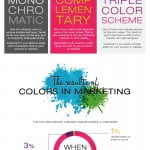
The technical term “typography” is often interchangeably used with the more common “font”. But before getting into what typography entails, and its all-pervading presence in our life, Dr Ajanta Sen deems it important to situate it in the context of design. “Design, as opposed to art, can be mass-produced, which makes it a potent tool or instrument of change,” says the founder of Design in India, a resource site for the Indian design community.
“From the moment we wake up till we go back to sleep, our day is defined by the need to communicate, which happens through the spoken and written word. Because the latter leaves its footprints, it needs to [be designed well to] have an impact. And this is where typography, or manifest articulation of the spoken word, comes in,” she explains.
Celebrating this beauty, form and function in typography is the 11th edition of Typography Day, which returns to Mumbai after touring Bengaluru and Sri Lanka in 2016 and 2017 respectively. With Santosh Kshirsagar, acting dean, Sir JJ School of Applied Art, as this year’s host organiser, Typography Day has been founded by Prof Ravi Poovaiah, Industrial Design Centre (IDC), Indian Institute of Technology Bombay (IIT B), who has co-organised it with Prof GV Sreekumar and Prof Girish Dalvi of IDC; Prof Udaya Dharmalingam, Department of Design, IIT Guwahati; and Dr Sen.

Posters from earlier editions: (clockwise from top) Experimental Typography by Pranav Parab, India; Conversation in Marathi by Rohit Keluskar, India; Nature (in Nastaliq script) by Mohammad Reza Rahimi, Boof graphic, Iran; (above) an award-winning poster from the 2018 edition. Pics/typoday.in
Workshops on typography and calligraphy will be the highlights of the first day of the event, which will be followed by an international conference devoted to addressing issues faced by type designers, users and educators. The event is expecting participation from academicians, industry professionals, research scholars and students.
The conference will open with the RK Joshi memorial lecture, in honour of the master typographer known for his work in advertising before he trained students at the IDC, who went on to work in the prestigious Centre for Development of Advanced Computing (C-DAC). An exhibition of posters and typographic works of students and faculty members from design institutes in Iran, Uruguay, Estonia, Latvia, China, Japan, Taiwan and other countries along with India, which have been selected by a blind jury, will be part of the event. A commemorative volume encapsulating what emerged from the last 10 years of observing Typography Day will also be released.
“There is a certain dilemma when it comes to design in India. While design is often associated with the post-Industrial Revolution milestone, in India, its history goes back to millions of years with the concept of abhikalpa (giving form to imagination). We may not have had the print technology to reproduce design industrially, but we used other media to reproduce our manuscripts, for instance,” explains Dr Sen, emphasising the need to dispel the myth that design and related innovation comes only from the West.
She also highlights the scope for typography in India with its many languages and scripts. But as much as typography needs to be imaginative, it also needs to be inclusive, she says. “If I leave it to specialists, I am leaving out other stakeholders like ethnographers and social commentators. A physiotherapist treating a patient of cerebral palsy, for example, is best placed to say whether a font is too small for his patient to read,” she elaborates. “If the user and typographer don’t handhold each other, how will communication attain simplicity?” she asks.
[“Source-mid-day”]










